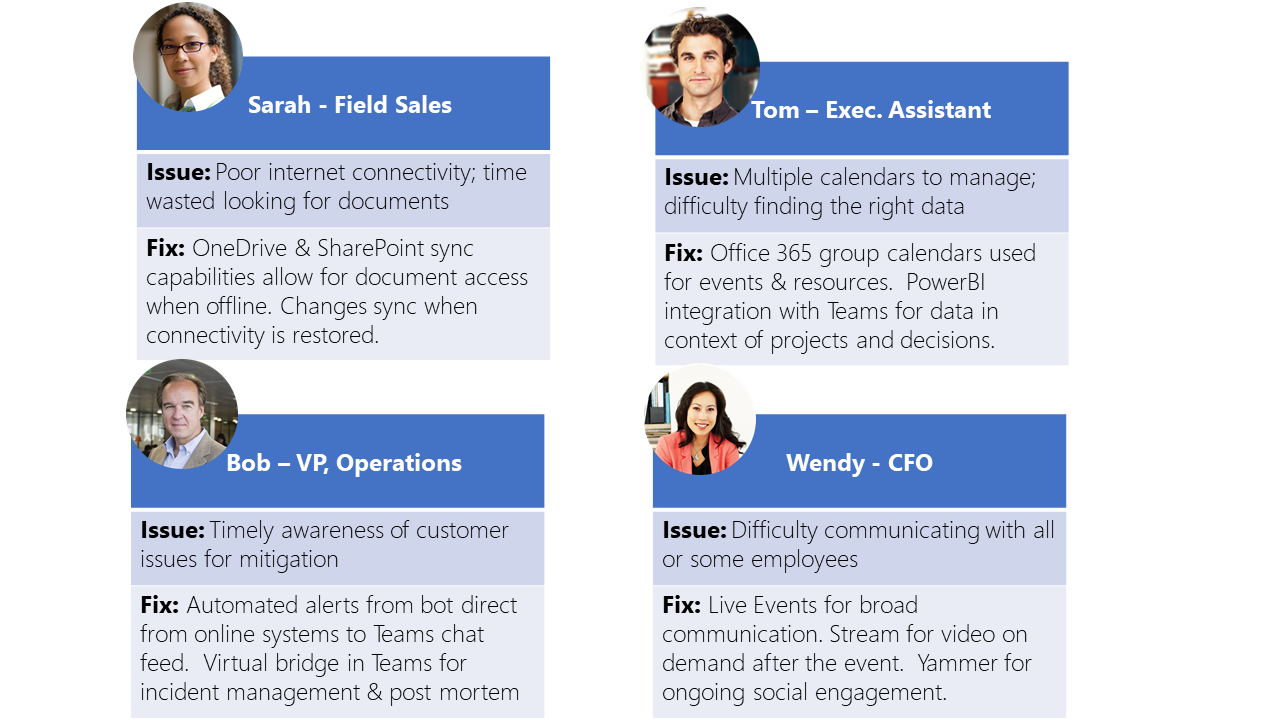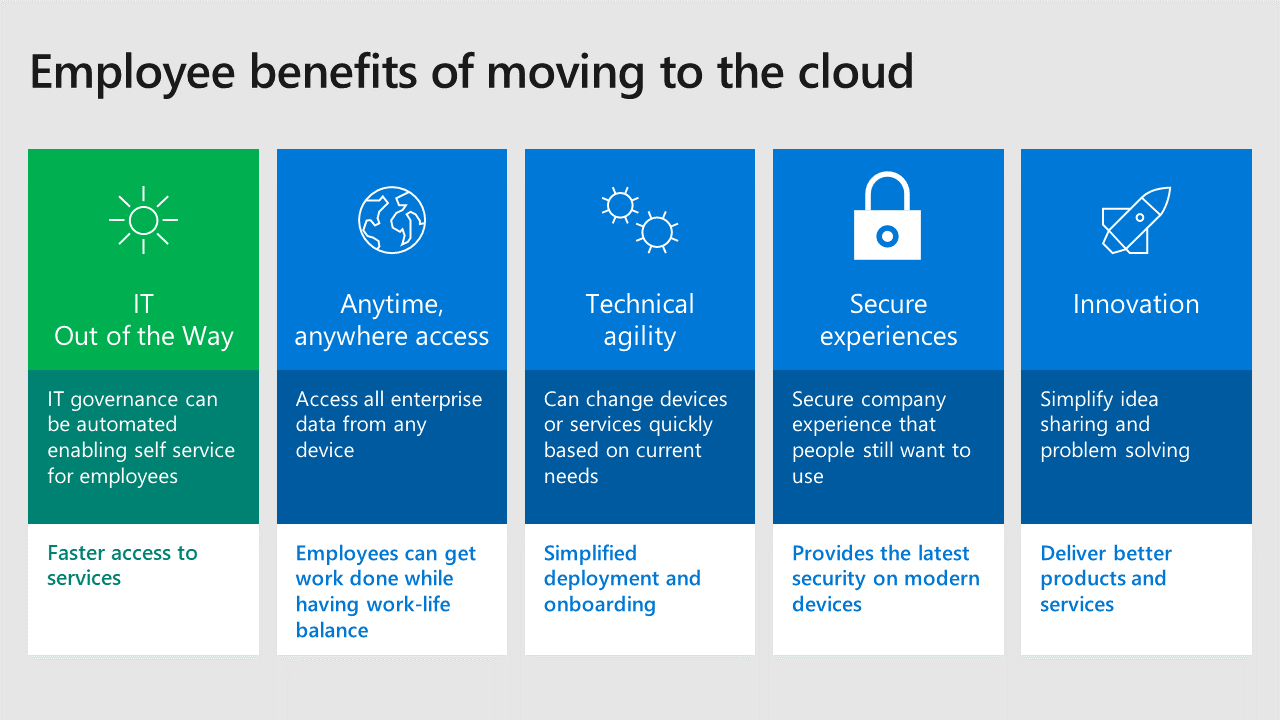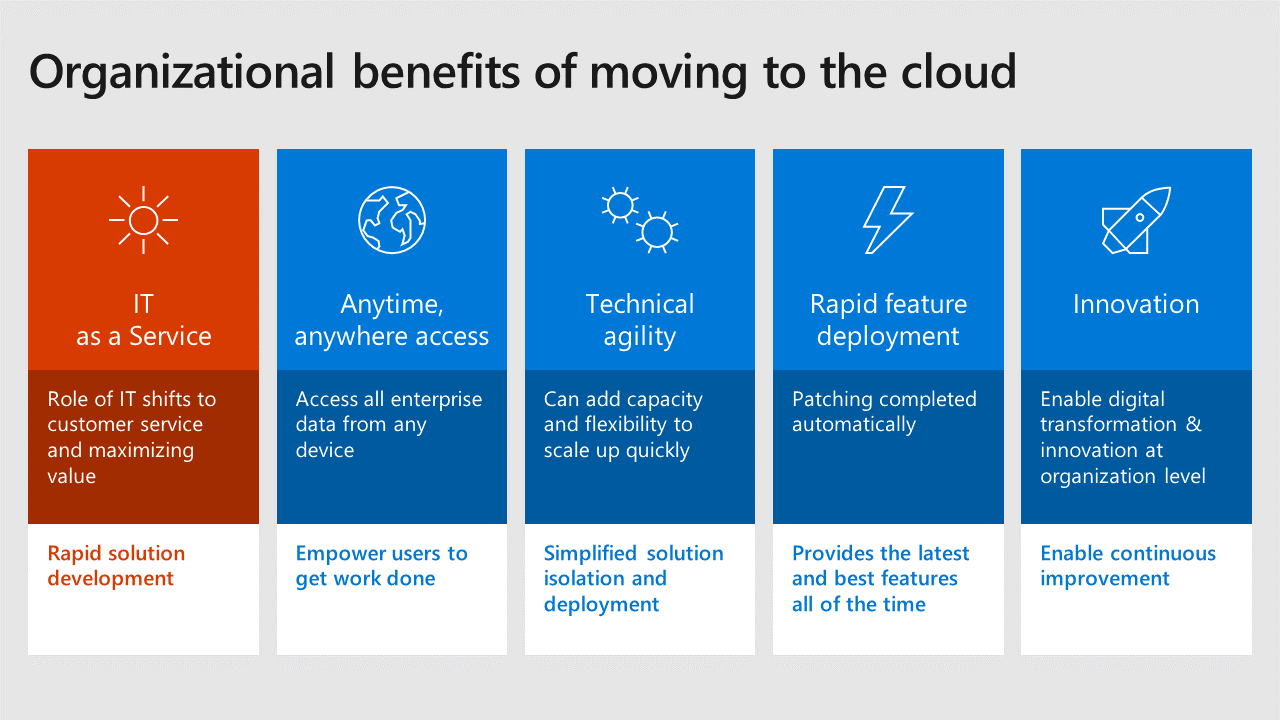How to use the cloud to your advantage
Many employees are still emailing spreadsheets, storing them on their local drives or on a network share and wasting precious time looking for the "right" version of that customer presentation. This is the reality of the employee experience in every industry around the world. Collectively as change and IT professionals we have failed our employees by not imbuing them with desire for digital literacy. Now that we have accepted this fact, we can move to rectify the situation.
A common mistake in user adoption programs is to tout the benefits of moving to the cloud from the perspective of the organization or its IT department. These are not motivating factors for most employees. Employees are paid to drive results in a particular discipline and so we must share with them how changes like the implementation of Microsoft Teams or other collaboration and communication solutions will benefit them.
First and foremost, we can reduce their interaction with IT. Properly governed Microsoft Teams and other Microsoft 365 workloads can support a self-service mode. This allows employees to create project teams on-demand and when they need them. This reduction of friction with IT and IT services is a capability that will allow you to deliver a more secure environment for your company data by reducing your employee's reliance on consumer and shadow software.
 Activity
Activity |
|---|
| Take stock of the usage of consumer or unapproved software in your environment by scanning your network for *.exe files or conducting a short survey. |
Other benefits like anytime/anywhere access can often sound to an employee like, "I have to work anytime and anywhere." Instead show the benefit of answering an important chat while in-between customers or while picking up your children from school (though not while driving!). The ability to meet the demands of today's pace of business is essential but so is making sure you attend to family responsibilities. Supporting a secure, mobile workforce with elegant software can address these needs.
Part of your core message can be to acknowledge that your employees are fundamentally trying to do a great job. They want to collaborate more seamlessly and deliver a great experience to your customers. It is the job of IT, change, and business leaders to design systems that will melt into the background of this primary goal. But first, we must weave appreciation for our employees into the change dialog.
 Activity
Activity |
|---|
| Consider creating an employee spotlight for people who use the new experience to improve the experience of your customers and fellow employees. Have your executive sponsor participate in acknowledging these employees. This has a positive impact on your culture and the engagement of your employees. |
Organizational benefits of moving the cloud
At the same time, you may be charged with solidifying for your stakeholders what this transition to a modern cloud experience will gain for them. Your stakeholders may also be in denial or resistance to this change. However, most stakeholders and executives realize the need for greater technical agility and innovation. They too need secure, anytime/anywhere access to corporate data and want to control costs in IT by transforming its ability to be a competitive advantage rather than a cost center.
Your stakeholders and executives are employees too. They may have unique needs, but they too are emailing those spreadsheets around. Pay special attention to helping them transform to gain more vocal decision makers that will support your change program.
 Activity
Activity |
|---|
| Meet with the executive assistants in your company regularly in a relaxed environment. Encourage them to share with you the challenges they have in supporting their executives and the water cooler buzz about the change that is being implemented. This group of individuals are normally influential regarding any change. Engage with them early and often! |
Employee benefits of moving to the cloud

Every employee wants to know, "What's in it for me?" when you start discussing changing the way they work. Too often we make the mistake to start talking about product features and organizational benefits instead of empathizing with their day to day struggle to collaborate, communicate, and get work done. This can easily be changed by shifting the center of gravity of the change program to be the employee experience.
The graphic above shows four different personas with common issues. A persona is a profile of a type of employee or role in your organization. It normally includes their title or role, years of service, years in role, core pain points, commonly used tools, metadata like region and year of experience, whether they work from home or not and the like. Persona mapping can be detailed however for the purposes of our course, and your project, we recommend keeping it simple.
This simple mapping shows a user, their role, a common problem and how to address it with Microsoft 365. The outcome of this work is to clearly identify what is in it for the employee if they join you on the change journey.
 Activity
Activity |
|---|
| Conduct short, 15-minute interviews with employees at your work. Ask them the following questions: - "What do you like about how we collaborate here?" - "What tools do you use frequently to collaborate?" - "What is most annoying about trying to collaborate and get work done at our company?" For each interviewee, note how long they have been at your company, what role they currently have, and how long they have been in it. Try to interview a few senior leaders, middle managers and new employees to get a quick baseline of their perspectives. It is best to do these in person if possible so that you can observe the body language and tone of the person you are interviewing. You can also conduct these via video chat or if need be by written response through a Form. Use this information to begin to form a picture of how collaboration services are viewed in your company. Remember to thank people for their feedback! |
 Example Activity for Contoso
Example Activity for Contoso |
|---|
| You have reviewed the information from your employee interviews. First gather your priority pain by using a persona pain point PowerPoint template. This will provide you with a visual reference of the issues facing your employees. We encourage you to put a face with the name and include their profile photos when you can. Use this list to begin documenting target business scenarios that should be selected for improvement. |
The importance of User Adoption Planning
Improving the collaboration and communications experience for your employees normally takes more than one product or experience. At Contoso, we want to improve project management, product and service delivery, and internal communication. We often refer to these scenarios as the "Better Together" scenarios. Some examples of "Better Together" pairings are:
- Microsoft Teams and SharePoint - Broad news and communications functionality with modern sites; document lists and libraries with custom metadata and workflows.
- Microsoft Teams and Planner - Modern project management for everyone
- Microsoft Teams and Power BI - Integrated data visualization tools to empower data driven decisions
- Microsoft Teams and Viva Engage - Collaboration for community managers
- Microsoft Teams with Forms and Flow - Data gathering and activation with cross product, out of the box workflows
If you are an IT Pro who does not commonly handle or is new to user adoption find and nurture the curious, helpful people in your organization who are interested in helping others improve their digital literacy. These individuals often have invaluable information about business processes that can easily be improved.
Remember that the journey to improved collaboration is a human centered process that is not about the technology. It's about the people.

